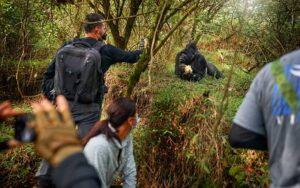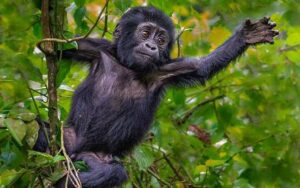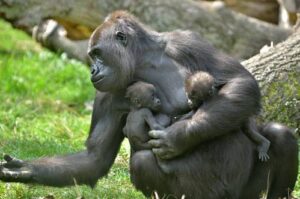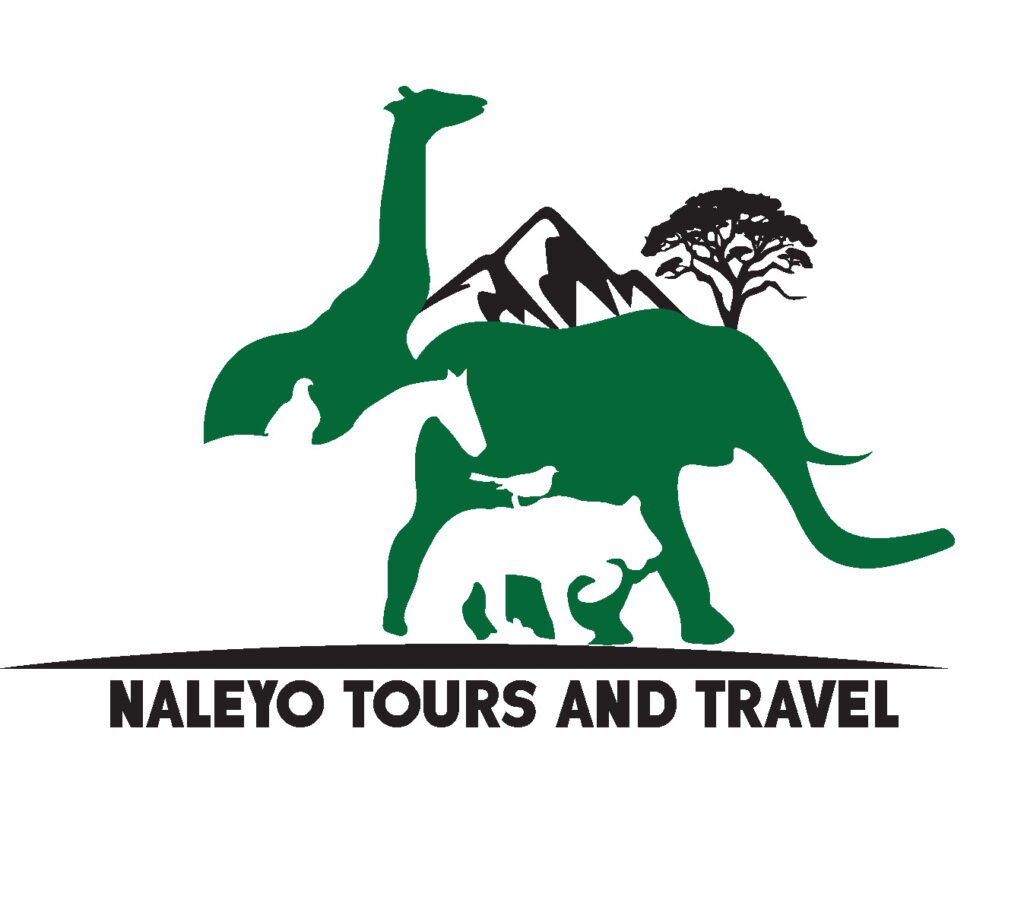Africa is home to one of the most awe-inspiring creatures on the planet the gorilla. These gentle giants, found primarily in the rainforests of Central and East Africa, offer an unforgettable wildlife experience. Observing gorillas in their natural habitat is a truly transformative adventure, and there are few places on Earth where you can come so close to these intelligent and social beings.
Types of Gorillas in Africa
There are two main species of gorillas found in Africa: the Eastern Gorilla and the Western Gorilla, each with its own distinct sub-species:
Mountain Gorillas: These are the most famous and are primarily found in the Virunga Mountains, shared by Uganda, Rwanda, and the Democratic Republic of Congo. Mountain gorillas are known for their thick fur, which helps them survive in the cold high-altitude environment.
Lowland Gorillas: The Western Lowland Gorilla is found in the dense forests of West and Central Africa, while the Cross River Gorilla is more elusive and found in a limited region between Cameroon and Nigeria.
The Gorilla Experience
Gorilla trekking in Africa is an exhilarating adventure, offering travelers the chance to witness these incredible animals in their natural environment. The trek can be challenging, as it takes you deep into the heart of Africa’s rainforests, through dense vegetation and steep terrain. But the reward is well worth the effort – an up-close and personal encounter with a family of gorillas.
The Gorilla Safaris in Uganda and Rwanda are especially popular. In Rwanda’s Volcanoes National Park, you’ll have the opportunity to visit the famous Susa group, one of the largest and most famous gorilla families. Uganda’s Bwindi Impenetrable Forest and Mgahinga Gorilla National Park also offer exceptional gorilla trekking experiences, with Bwindi being home to half of the world’s mountain gorilla population.
Gorilla Conservation Efforts

Gorillas in Africa face a variety of threats, including poaching, habitat loss, disease, and human-wildlife conflict. Conservation efforts, particularly in Rwanda, Uganda, and the Democratic Republic of Congo, have been successful in protecting these incredible creatures. The work of organizations like the Gorilla Doctors, The Dian Fossey Gorilla Fund, and local communities has helped raise awareness and create sustainable tourism that benefits both the gorillas and local populations. Tourism has also played a key role in these efforts. The revenue generated from gorilla trekking permits helps fund anti-poaching patrols, habitat restoration, and community education. This symbiotic relationship between conservation and tourism is essential for the future of gorillas in Africa.
Why You Should Visit
 Gorilla trekking in Africa isn’t just about seeing these magnificent creatures—it’s about creating a deeper connection with nature and supporting the preservation of a species that has long been under threat. It’s a unique opportunity to witness the beauty of wildlife conservation and the importance of protecting our planet’s most endangered species. Whether you’re trekking through the misty mountains of Rwanda, the dense forests of Uganda, or the vast jungles of Congo, an encounter with Africa’s gorillas is an once-in-a-lifetime experience. The memories of standing face-to-face with a silverback or watching a mother gorilla care for her young will stay with you forever, reminding you of the precious creatures that roam the African wilderness.
Gorilla trekking in Africa isn’t just about seeing these magnificent creatures—it’s about creating a deeper connection with nature and supporting the preservation of a species that has long been under threat. It’s a unique opportunity to witness the beauty of wildlife conservation and the importance of protecting our planet’s most endangered species. Whether you’re trekking through the misty mountains of Rwanda, the dense forests of Uganda, or the vast jungles of Congo, an encounter with Africa’s gorillas is an once-in-a-lifetime experience. The memories of standing face-to-face with a silverback or watching a mother gorilla care for her young will stay with you forever, reminding you of the precious creatures that roam the African wilderness.
Gorillas in Uganda: A Journey into the Heart of Africa’s Wild
Uganda, often referred to as the “Pearl of Africa,” is home to a rich diversity of wildlife, but perhaps the most iconic and awe-inspiring creatures it harbors are the mountain gorillas. These majestic, gentle giants roam the lush, mist-covered forests of Uganda’s Bwindi Impenetrable Forest and Mgahinga Gorilla National Park, offering one of the most unforgettable wildlife experiences in the world.
Where to See Gorillas in Uganda
Uganda is one of the only places on Earth where you can see mountain gorillas in the wild, and it’s the premier destination for gorilla trekking. The two primary locations for gorilla tracking in Uganda are:
Bwindi Impenetrable Forest National Park
Located in southwestern Uganda, Bwindi is home to more than half of the world’s remaining mountain gorilla population. This UNESCO World Heritage Site is an ancient forest, rich in biodiversity, and its challenging terrain makes it a prime location for gorilla conservation. Bwindi is divided into four main regions: Buhoma, Ruhija, Nkuringo, and Rushaga, each offering unique trekking experiences. The park hosts several habituated gorilla groups, with the opportunity to trek into the forest and observe these incredible creatures in their natural habitat.
Mgahinga Gorilla National Park
Situated on the border with Rwanda and the Democratic Republic of Congo, Mgahinga is smaller but no less significant in terms of gorilla trekking. The park is part of the Virunga Conservation Area, and its home to the Nyakagezi Gorilla Group. While less visited than Bwindi, Mgahinga offers a more intimate and quieter trekking experience, with the backdrop of the stunning Virunga Mountains.
Gorilla Trekking Experience in Uganda
Gorilla trekking in Uganda is an unforgettable adventure, allowing visitors to get up close to one of the world’s most endangered species. After a briefing, groups are led by experienced rangers who guide trekkers through the thick jungle, navigating steep slopes and rugged terrain to reach the gorilla families. The journey can take anywhere from 30 minutes to several hours, depending on where the gorillas are located that day.
Once you arrive at the gorilla group, you’ll have an hour to observe them in their natural habitat. Watching a silverback (the dominant male) lead his family, or seeing the playful antics of the young gorillas, is a humbling experience. These moments of connection—being in the presence of such magnificent creatures—are the highlights of any safari.
Conservation and Gorilla Habituation
Uganda is a vital player in the conservation of mountain gorillas. The country has made tremendous strides in increasing the gorilla population through dedicated protection and habitat restoration efforts. Uganda’s Gorilla Doctors and other conservation organizations work tirelessly to monitor the health of the gorillas, combat poaching, and reduce human-wildlife conflict.
One of the most exciting developments in gorilla conservation is the gorilla habituation process. This program, unique to Uganda, allows a limited number of visitors to join researchers in the long-term effort of habituating gorillas to human presence. This is an important part of the conservation process, as it helps gorillas gradually adjust to human contact and ensures their survival in a world increasingly affected by human activity.
Gorilla Permits and Sustainable Tourism
The cost of a gorilla trekking permit in Uganda is an important factor in the success of gorilla conservation. The permits, which currently cost around $700 USD per person, contribute directly to conservation efforts, including anti-poaching measures, habitat preservation, and community development projects. The high demand for gorilla trekking also helps to fund vital programs in local communities, providing benefits such as education, healthcare, and infrastructure.
Uganda’s government and conservation organizations are committed to ensuring that gorilla tourism remains sustainable, so that both the gorillas and the surrounding communities benefit from the influx of visitors. In addition to supporting the preservation of the species, this eco-tourism has become a vital source of income for many Ugandans living in the vicinity of the national parks.
Why Visit Uganda for Gorilla Trekking?
A Rare Opportunity: Uganda is one of only three countries where you can see mountain gorillas in the wild. It’s a rare, once-in-a-lifetime experience to come face-to-face with these majestic animals in their natural habitat.
A Rich Cultural Experience: In addition to gorilla trekking, Uganda offers a wealth of cultural and wildlife experiences, including visits to local Batwa Pygmy communities, bird watching in Queen Elizabeth National Park, and exploring the famous source of the Nile at Jinja.
Unbeatable Scenic Beauty: Bwindi’s lush rainforests and Mgahinga’s dramatic volcanic landscapes create a backdrop that is unmatched in Africa, adding to the sense of adventure and wonder as you embark on your trek.
Support Conservation Efforts: By visiting Uganda and participating in gorilla trekking, you are directly contributing to the ongoing conservation of the mountain gorilla population and the welfare of local communities.
A gorilla trekking expedition in Uganda is one of the most immersive wildlife experiences available, combining adventure, conservation, and unforgettable moments. It’s not just about seeing gorillas; it’s about connecting with nature, understanding the importance of preserving endangered species, and contributing to a sustainable future for the wild places of Africa.
Baby Gorillas in Uganda: A Heartwarming Encounter with the Future of an Endangered Species
Baby gorillas in Uganda are some of the most heartwarming and enchanting sights you’ll encounter during a visit to this beautiful country. These young primates, still in their early years, are a testament to the success of ongoing conservation efforts, and seeing them up close can be a life-changing experience. Watching a baby gorilla interact with its family, playfully explore the forest, or bond with its mother offers a glimpse into the social fabric of gorilla families.
The Life of a Baby Gorilla
Baby gorillas, also called infants, are born after a gestation period of about 8.5 months, usually weighing between 3.5 to 4.5 pounds. Like all gorillas, they are highly dependent on their mothers for survival during the first few years of life. In fact, a baby gorilla will stay close to its mother, clinging to her fur for support, until its strong enough to begin walking and exploring the world around it.
At birth, baby gorillas are incredibly vulnerable, but they grow and develop rapidly in the protective care of their family. They are playful and curious, and as they grow, their interactions with other members of the group become more engaging. Baby gorillas mimic adult behaviors, often seen trying to playfully mimic the silverback or tugging on branches to practice skills they’ll need as adults.
Where to See Baby Gorillas in Uganda

In Uganda, Bwindi Impenetrable Forest and Mgahinga Gorilla National Park are the best places to witness baby gorillas. These national parks are home to the endangered mountain gorilla, with many gorilla families residing here. Many of these families have babies, with young gorillas being born throughout the year.
Bwindi, in particular, is a prime location to encounter baby gorillas during a gorilla trek. The Rushaga and Nkuringo regions of Bwindi are home to some of the most well-known families, where you may have the chance to see young gorillas interacting with their mothers and other members of the group.
In Mgahinga, the gorilla family known as Nyakagezi also has young members, and although the terrain can be more challenging, it’s a wonderful place to explore and observe gorilla families in a quieter, less crowded environment.
Gorilla Trekking and Baby Gorillas
Gorilla trekking in Uganda allows you the opportunity to observe gorilla families in their natural habitat. During your trek, experienced guides will lead you to the specific gorilla group you are visiting, and if a baby gorilla is present, you will be able to watch this tender, playful relationship between the infants and their family members.
Seeing a baby gorilla in action whether it’s clinging to its mother, playing with its siblings, or simply observing the world is a powerful and emotional moment. The bond between a baby gorilla and its mother is particularly touching; mothers are extremely protective, nurturing, and attentive to their infants, which is something trekkers often witness during their visits.
The Importance of Baby Gorillas in Conservation
The birth of baby gorillas is incredibly important for the conservation of the species. Mountain gorillas are critically endangered, with fewer than 1,000 individuals left in the wild. Every new birth is a hopeful step toward increasing the population and ensuring the survival of these majestic animals. The presence of baby gorillas highlights the success of conservation efforts in Uganda, where strict anti-poaching laws, habitat preservation, and community involvement have all contributed to the growing gorilla population.
In fact, the gorilla habituation process in Uganda is crucial for baby gorillas, as it ensures they grow up accustomed to the presence of humans while keeping the gorillas safe from poachers and other threats. This process helps ensure that these young gorillas will grow up in an environment where they can thrive and become part of the larger effort to protect the species.
Why Baby Gorillas Are a Must-See in Uganda

An Unforgettable Experience: Witnessing the innocent play and interactions of baby gorillas is a deeply emotional and unforgettable experience for any traveler. The opportunity to observe these endangered creatures in the wild is a privilege.
Connection to Conservation: When you visit Uganda and participate in gorilla trekking, you’re not just watching a baby gorilla play—you’re contributing to the conservation of a species that is at risk of extinction. Your visit helps fund vital efforts to protect gorillas and their habitats.
A Family Adventure: The sight of baby gorillas alongside their family members offers a profound sense of connection to the animal kingdom. It’s a reminder of the importance of protecting these animals and their families.
Uganda’s mountain gorillas, especially the babies, represent a beacon of hope for wildlife conservation. If you’re lucky enough to witness a baby gorilla on your trek, it will undoubtedly become one of the most touching and memorable parts of your adventure.
